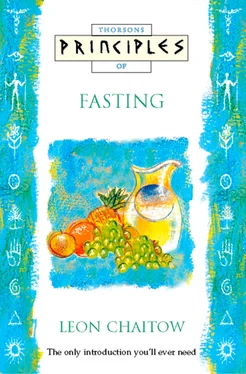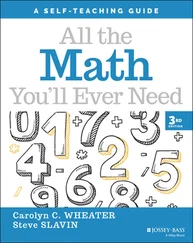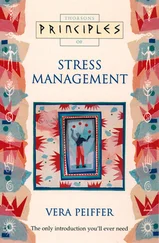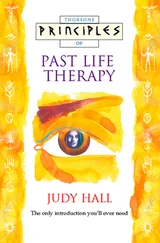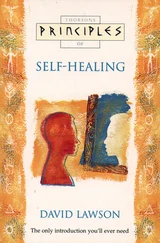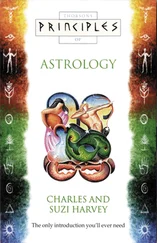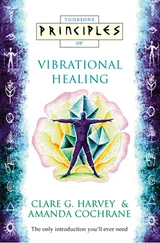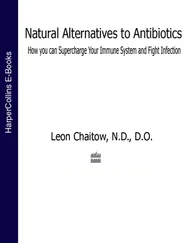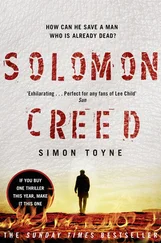Fasting is to be actively discouraged outside of a residential setting for anyone with an eating disorder (such as anorexia and bulimia) or who suffers from any form of mental disease which requires medication to control it. Fasting is particularly contraindicated for anyone who does not fully understand and agree with its application.
The author and publishers specifically caution against lengthy fasting (anything longer than two days) without expert supervision.
At the age of 12 I experienced acute abdominal pain, and a doctor advised immediate hospitalization for removal of my appendix. My mother had also asked for advice from my father’s brother, a noted naturopath and chiropractor, Boris Chaitow (cousin of Stanley Lief, of whom more later).
My uncle Boris took the extraordinary – many would say irresponsibly foolhardy – step of advising against surgery, and placed me on a water fast. During the following 10 days I (a most unco-operative patient!) was subjected to the indignity of regular tepid enemas, as well as hot and cold packs and a water-only regime.
A few key facts are clearly embedded in my memory – that after the first day I lost all interest in and desire for food; that I detest enemas, and that I felt extremely well during the last week of the fast, with no sign of the agonizing pain previously experienced.
I am well aware that the whole enterprise could have turned out disastrously had my appendix ruptured, as the doctor had envisaged if surgery was delayed. But it did not, and I still have both it and a firm conviction based on personal experience of the value of therapeutic fasting. Incidentally, at the time of writing, Boris Chaitow is alive and well and just short of his 90th birthday.
Having subsequently trained in osteopathy and naturopathy (of which fasting forms an important element) I have over the years advised many patients with a variety of health complaints to fast – but have never had the nerve to risk what Boris (and my parents) risked with my appendicitis – nor do I recommend anyone else to do so.
Fasting is the avoidance – totally or partially – of the eating of food and liquid, except for pure water, for a particular period of time.
There are also a number of modified versions of fasting which allow the taking of juices, and even some foods, as part of their protocols. There are ‘mono-diets’ (single food fasting such as the ‘grape cure’), dry fasts (eating dry rusks with minimal liquid intake, as in the ‘Schroth Cure’), juice fasts and herb tea fasts.
In absolute terms, these methods are not really ‘fasts’ at all, but ‘restricted diets’. However, since they offer some of the benefits of fasting (especially if repeated regularly) they are included as possible alternatives.
FASTING IS NOT STARVATION
Not eating does not mean that you are starving. There is, in most people, enough reserve food stored to last for many days – usually many weeks. So, during a controlled therapeutic fast the body does not use any of its essential tissues as fuel, but instead ‘burns’ or metabolizes fat stores. At the same time a variety of important detoxification and repair processes begin which are of immense value to health, and these are explained in detail in later chapters.
RIGHT AND WRONG WAYS OF FASTING
The use above of the word controlled is meant to indicate that there are ‘right’ and ‘wrong’ ways of fasting, and just what should and should not be done when a fast is undertaken (to ensure both safety and effectiveness) is very carefully outlined as we look at the long history and use of fasting for health.
Probably the most undesirable way to fast is if you have a particular health problem and stop eating, fail to drink sufficient water and/or continue to take non-essential medication. Note that insulin, thyroid hormone and, in some instances, prednisone are regarded as ‘essential’ if you have become dependent upon their continued use to the extent that stopping their intake could produce a violent and possibly fatal result.
The way a fast is conducted, and the way it is broken, are very important indeed, and you are urged to read all of this book, not just parts of it, and to fully appreciate the guidance offered before experimenting with a fast. Serious problems have been known to occur when rules are broken during fasts.
To effectively and safely use fasting as a means of restoring (and maintaining) good health, it is necessary to fully understand the self-healing functions of the body and how they operate. These are explained in this book, and once you have grasped them and are fully aware of the rules, the potential of this marvellous method of regeneration is open to you, should you choose to use it.
There is probably no more powerful healing method than therapeutic fasting when it is applied correctly and used responsibly and safely, since fasting does not impose a solution on the disturbed workings of the body, but allows it space and time, a period of ‘physiological rest’, during which healing can occur naturally.
In acute conditions, most notably fevers and infections, it should be the first choice of health care, since fasting dramatically increases the efficiency of the immune function, at least for the first 24 to 36 hours.
In chronic conditions, such as heart disease, rheumatoid arthritis, ulcerative colitis, psoriasis and eczema, there is a huge amount of evidence showing that controlled and supervised fasting can help such stubborn and sometimes life-threatening conditions to clear completely.
In the UK, between the First and Second World Wars, Stanley Lief ND, DC, the gifted naturopathic healer, supervised thousands of successful lengthy fasts at Champneys, the health resort in Hertfordshire which he ran for over 30 years. The longest fast recorded at Champneys lasted for over three months (95 days), the outcome of which was the patient’s complete recovery from chronic ill-health (I know because I met the ‘patient’ some 30 years later during my own working period at Champneys in the early 1960s).
In the USA, Herbert Shelton, the pioneer practitioner of Natural Hygiene, also initiated and supervised numerous fasts in severely ill patients, often with amazing results.
If these two practitioners, and their countless followers, achieved such wonderful results, why are we not told more of fasting as a means of healing?
Well, to be sure, we are, but you have to search for reports of fasting benefits in the medical journals, where only now and then evidence appears which supports the results claimed for this most ancient, efficient and potentially inexpensive of healing methods.
In 1991, for example, the prestigious medical journal The Lancet published the results of a one-year study of patients with rheumatoid arthritis who had been treated by means of fasting and a vegetarian diet.
WHAT PREVENTS THE WIDER USE OF FASTING?
The results of fasting patients with rheumatoid arthritis were so good that there can now be no doubt at all that fasting should be the treatment of choice for this condition – and for almost all auto-immune conditions in which the body’s defence systems attack parts of itself. That few rheumatologists employ fasting for their patients is indicative of both the lack of awareness of such studies by most doctors, and the power of the pervading idea that we have to ‘take something’ to assuage symptoms, or to control pain and disability.
Читать дальше
